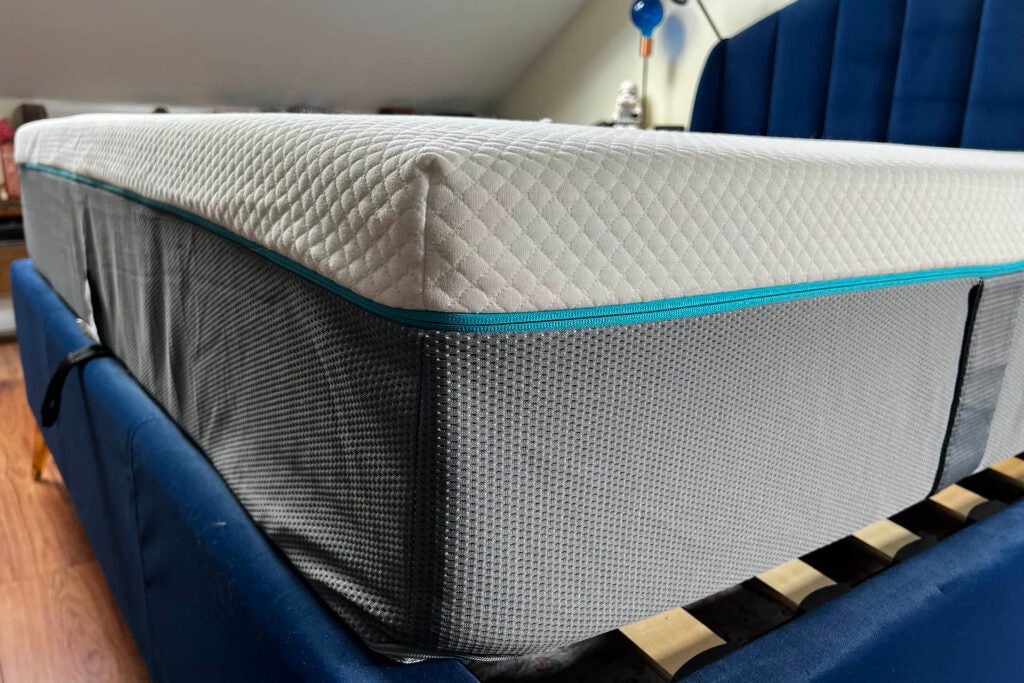
There are three main types of mattress to choose from:
Open coil is the oldest type, with an interconnected set of springs wound through the entire interior. These tend to offer greater support and are the lightest type of mattress. However, cheaper models can be uncomfortable, with the springs felt through thinner materials, and motion from one sleeper can be transported to another.
Pocket sprung mattresses contain individual springs mounted inside material pockets. The pocket springs partially mould to your body’s shape, giving a greater level of support, and because the springs are independent, they prevent two sleepers side by side from being disturbed by the other’s movement. The main advantage is that pocket sprung mattresses are generally cooler to sleep on than memory foam models. These mattresses can sometimes be rolled but some are sold and shipped at full size.
Foam mattresses are primarily memory foam models. These are easy to transport, with manufacturers able to squeeze the mattress into a box for delivery. Memory foam moulds itself to your body, providing excellent support and letting you sink into the bed. This can take a while to get used to, particularly if you’re used to a sprung mattress. Memory foam mattresses isolate movement, helping two sleepers keep to themselves. They’re better for allergen sufferers, harbouring fewer allergens than sprung mattresses. The big downside is that memory foam can be hot; in fact, this was the biggest complaint aired.
You can buy combination or hybrid mattresses, which combine two or more elements. For example, it’s common to find pocket sprung mattresses that use a memory foam layer on top for added comfort.
Mattresses are rated by their firmness, and the choice comes down to a couple of factors. The first is weight. The heavier you are, the more you’ll need a firmer mattress; a medium model or less will feel far too soft.
Ultimately, your choice of mattresses will be down to personal preference. This is the reason we’ve incorporated user reviews into this guide to offer an overview of each mattress, so you can find the one that suits your needs.
Side sleepers can often find it hard to get a mattress that gives them adequate support and comfort, with any mattress needing to support several pressure points. Again, it’s worth trying a few models to find one that really works for you, but there are some general pointers to help you find the right model.
First, look for a hybrid mattress, combining springs and a memory foam top. These mattresses will typically give you the level of support that you need across your entire body. Next, a medium-firm mattress or softer is usually a good choice, with the mattress better able to contour around your body, naturally supporting your spine and pelvis. These mattresses will let your body slightly sink into the top material, giving you a soft, cushion to lie against, which will generally prove to be more comfortable.
It used to be advised that your mattress should be replaced every 10 years. However, the industry, anxious for a quicker turnover, now suggests seven – but the truth is that it really depends on the type of mattress.
If you bought a cheap sprung mattress then you may find that it only lasts a couple of years; a more expensive memory foam mattress should last a lot longer. Look out for tell-tale signs that your mattress is wearing: dips in the surface, spring starting to push through and the like.
To prolong your mattress’s life, follow the care instructions carefully. Some mattresses need to be flipped over (also called turned) regularly. Practically all mattresses benefit from rotation, where you turn them 180 degrees. This exposes all parts of the mattress to equal pressure, prolonging its life.
Mattresses can sag if left in the same position, so most manufacturers recommend that they’re regularly moved. Pocket-sprung mattresses can usually be flipped over, but all other types can’t. That’s because they’re built with layers in a specific order. Instead, most mattresses should be rotated according to the manufacturer’s instructions, which is usually around every three to six months.

